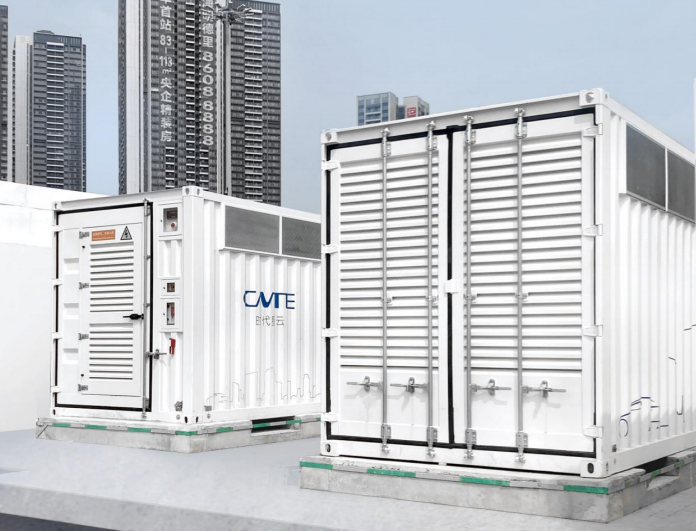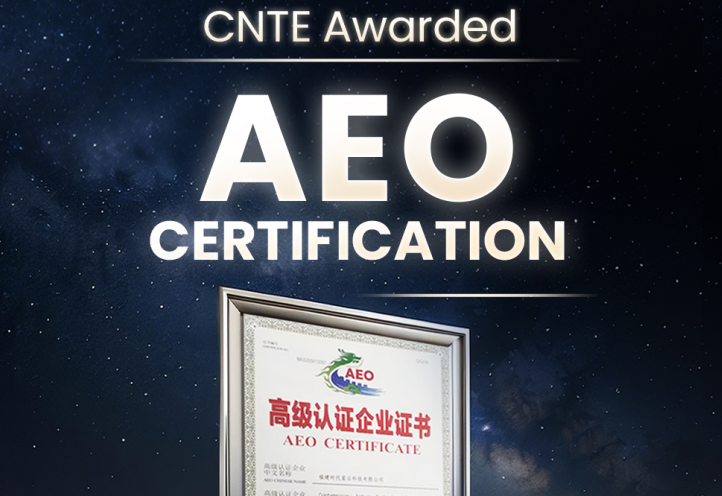Navigating the Benefits, Challenges, and Innovations in Energy Storage Systems
In this dynamic landscape, CNTE stands as a key contributor to the evolution of energy storage systems. As a leading supplier, CNTE plays a crucial role in driving innovation, supplying cutting-edge solutions, and propelling the industry towards a future powered by sustainable and efficient energy storage. As the world continues its journey toward a cleaner energy future, the benefits, challenges, and innovations in energy storage systems will undoubtedly shape the path ahead.
I. Introduction
A. Definition of Energy Storage Systems (ESS)
In the ever-evolving landscape of energy consumption, Energy Storage Systems (ESS) have emerged as a critical component, offering a means to store and release energy when needed. These systems play a pivotal role in the transition towards a more sustainable and reliable energy infrastructure.
B. Importance of Energy Storage in the Modern World
As the energy demand continues to rise globally, the ability to store energy efficiently becomes paramount. Energy storage not only addresses the intermittent nature of renewable energy sources but also enhances grid stability, reduces reliance on traditional fossil fuels, and promotes a resilient and adaptable energy ecosystem.
C. Brief Overview of Different Types of Energy Storage Technologies
Energy storage technologies are diverse, catering to various applications and demands. Broadly classified into mechanical, electrochemical, thermal, and electrical categories, each type presents a unique set of advantages and challenges.

II. Types of Energy Storage Systems
A. Mechanical Energy Storage
1. Pumped Hydro Storage
Pumped Hydro Storage stands as one of the oldest and most established forms of mechanical energy storage. It involves pumping water to an elevated reservoir during periods of low energy demand and releasing it to generate electricity during peak demand. This technology provides large-scale, reliable energy storage, contributing significantly to grid stability.
2. Compressed Air Energy Storage (CAES)
CAES stores energy by compressing air into underground reservoirs during surplus periods, releasing it to generate power when demand peaks. This approach capitalizes on existing infrastructure and offers a cost-effective solution for large-scale energy storage.
3. Flywheel Energy Storage
Flywheel Energy Storage utilizes the kinetic energy of a spinning rotor to store and release energy. This technology is highly responsive, providing quick bursts of power for short durations, making it suitable for applications requiring rapid energy injections.
B. Electrochemical Energy Storage
1. Batteries
a. Lithium-ion Batteries
Lithium-ion batteries have become synonymous with portable electronic devices and electric vehicles. Known for their high energy density, durability, and efficiency, they are at the forefront of grid and distributed energy storage applications.
b. Flow Batteries
Flow batteries store energy in liquid electrolytes, allowing for scalable and flexible designs. These systems excel in long-duration energy storage applications, providing a reliable solution for balancing supply and demand over extended periods.
c. Sodium-ion Batteries
Sodium-ion batteries offer a promising alternative to lithium-ion batteries, with potential cost advantages and environmental benefits. Ongoing research and development aim to enhance their performance and commercial viability.
2. Fuel Cells
Fuel cells convert chemical energy directly into electrical energy through a chemical reaction, offering a clean and efficient power generation option. As a form of electrochemical storage, fuel cells play a crucial role in both stationary and mobile applications.
C. Thermal Energy Storage
1. Sensible Heat Storage
Sensible heat storage involves capturing and releasing heat without undergoing a phase change. Common applications include solar thermal power plants and heating systems.
2. Latent Heat Storage
Latent heat storage utilizes the phase change of a material to store and release energy. This technology finds applications in areas such as solar heating and cooling systems.
3. Thermochemical Energy Storage
Thermochemical energy storage relies on reversible chemical reactions to store and release energy. This approach has the potential for high energy density and efficient long-term storage.
D. Electrical Energy Storage
1. Superconducting Magnetic Energy Storage (SMES)
SMES stores energy in the magnetic field created by a superconducting coil. This technology offers rapid response times and high efficiency, making it suitable for applications requiring instantaneous power delivery.
2. Capacitors
Capacitors store energy in an electric field and provide rapid discharge when needed. While they have lower energy density compared to batteries, capacitors excel in applications requiring quick bursts of power.
III. Applications of Energy Storage Systems
A. Grid-Level Energy Storage
1. Peak Shaving
Energy storage systems smooth out peak demand periods by storing excess energy during low-demand times and releasing it during high-demand periods, reducing stress on the grid.
2. Frequency Regulation
Energy storage contributes to maintaining grid frequency by quickly injecting or absorbing power as needed, ensuring a stable and reliable power supply.
3. Voltage Support
Energy storage systems enhance grid stability by providing voltage support during fluctuations, improving the overall resilience of the electrical infrastructure.
B. Distributed Energy Storage
1. Residential Applications
At the residential level, energy storage systems empower homeowners to optimize their energy consumption, store excess energy from renewable sources, and provide backup power during outages.
2. Commercial and Industrial Applications
In commercial and industrial settings, energy storage systems support load management, reduce peak demand charges, and enhance energy resilience, contributing to overall operational efficiency.
C. Transportation
1. Electric Vehicles
Energy storage is a cornerstone of the electric vehicle revolution, providing the necessary power density for extended driving ranges and rapid charging capabilities.
2. Charging Infrastructure
Energy storage plays a crucial role in stabilizing power supply for electric vehicle charging stations, ensuring reliable and efficient charging services.
In the rapidly evolving landscape of energy storage, companies like CNTE stand as key players, contributing to the development and deployment of cutting-edge technologies. As a leading energy storage systems supplier, CNTE plays a pivotal role in shaping the future of sustainable and reliable energy solutions.
IV. Benefits and Challenges
A. Environmental Benefits
Energy storage systems (ESS) play a pivotal role in fostering environmental sustainability. By facilitating the integration of renewable energy sources like solar and wind, ESS helps reduce reliance on fossil fuels, mitigating greenhouse gas emissions. The ability to store excess energy during periods of low demand ensures a more efficient use of renewable resources, promoting a cleaner and greener energy landscape.
B. Economic Benefits
The economic advantages of widespread energy storage adoption are multifaceted. Reduced dependence on peak power generation, improved grid reliability, and enhanced energy efficiency contribute to lower overall energy costs. Furthermore, the deployment of energy storage systems creates job opportunities in manufacturing, installation, and maintenance, stimulating economic growth and fostering innovation.
C. Challenges and Limitations
1. Cost
While the economic benefits are substantial, the initial cost of implementing energy storage systems remains a significant hurdle. High upfront costs for technology deployment and infrastructure can deter widespread adoption. However, as the industry matures and economies of scale come into play, the cost is expected to decrease, making energy storage more accessible.
2. Technological Limitations
Certain energy storage technologies face technological constraints, affecting factors such as energy density, efficiency, and cycle life. Overcoming these limitations requires ongoing research and development efforts to refine existing technologies and explore new solutions.
3. Environmental Concerns
The production and disposal of energy storage system components, particularly batteries, raise environmental concerns. The extraction of raw materials, such as lithium and cobalt, can have environmental and social impacts. Additionally, proper recycling and disposal methods must be established to minimize the environmental footprint of end-of-life energy storage components.
V. Recent Advancements and Innovations
A. Emerging Technologies
1. Solid-State Batteries
Solid-state batteries represent a breakthrough in battery technology, replacing traditional liquid electrolytes with solid materials. This innovation enhances safety, increases energy density, and opens the door to new applications in electric vehicles, grid storage, and portable electronics.
2. Advanced Materials
Advancements in materials science have led to the development of new materials with improved performance characteristics. These materials enhance the efficiency and durability of energy storage systems, contributing to longer lifespans and increased reliability.
B. Research and Development Initiatives
Researchers and industry players are actively engaged in initiatives aimed at pushing the boundaries of energy storage technology. Collaborative efforts focus on addressing challenges, optimizing existing systems, and exploring novel approaches to energy storage. Government and private sector investments in research and development are crucial drivers of innovation in this rapidly evolving field.
VI. Future Outlook
A. Potential Growth of Energy Storage Market
The energy storage market is poised for exponential growth in the coming years. As technology matures, costs decrease, and regulatory frameworks evolve, the adoption of energy storage systems is expected to accelerate. Grid operators, utilities, and consumers are recognizing the value of energy storage in achieving a reliable, resilient, and sustainable energy infrastructure.
B. Technological Advancements on the Horizon
Anticipating the future, technological advancements in energy storage systems are set to redefine the industry. Breakthroughs in materials, enhanced storage capacities, and improved efficiency are on the horizon. These advancements will not only address existing challenges but also unlock new possibilities for energy storage applications across various sectors.
Conclusion
In conclusion, energy storage systems are at the forefront of the global energy transition, offering versatile solutions for a myriad of applications. From grid stabilization to empowering residential consumers and revolutionizing transportation, the diverse array of energy storage technologies holds the promise of a more sustainable and resilient energy future.
Get in Touch
Recent Posts
Tags
- battery to grid
- better battery renewable energy
- charging station
- electrical energy storage exhibition
- energy storage system solar
- energy tech battery
- ess battery system
- large solar storage batteries
- new battery storage
- optical storage integration
- pcs battery system
- price per kwh battery storage
- smart battery storage
- solar battery container
- solar energy battery storage system
- solar energy storage technology
- solar ess system
- Solar panel energy storage systems
- Solar Power Plant Battery
- solar pv and battery storage systems





